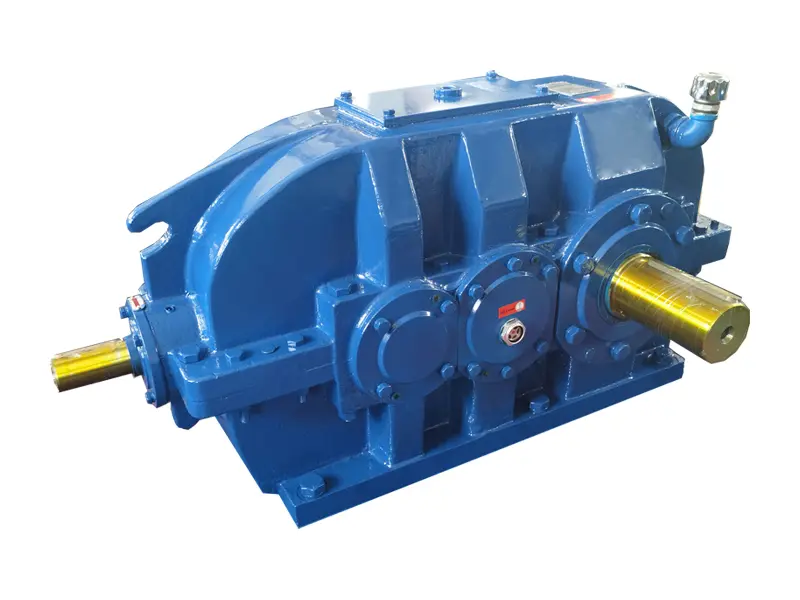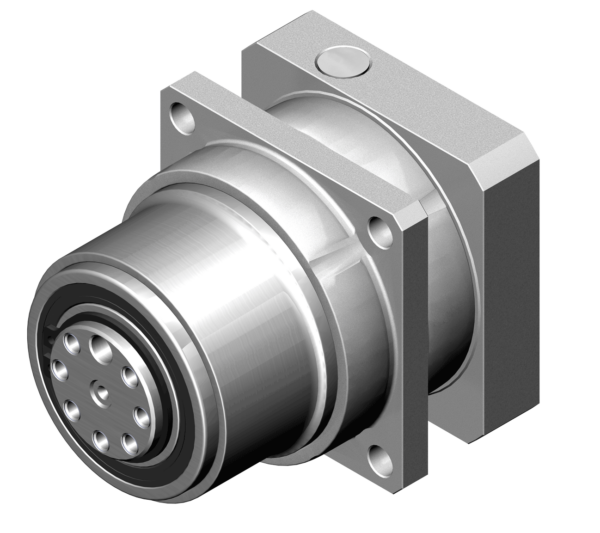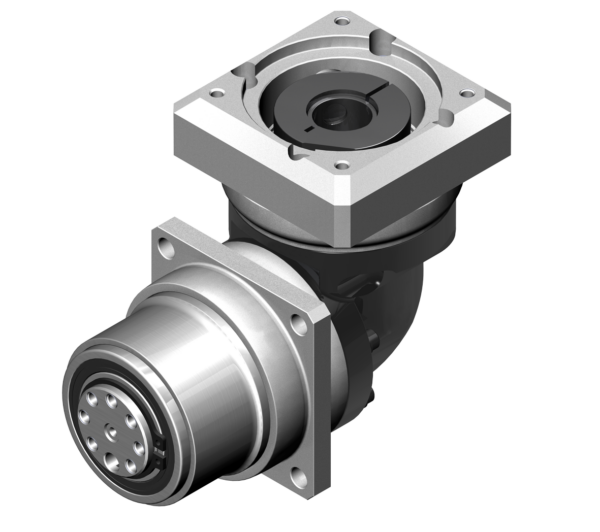Product Description
Our agricultural machine gearbox has many items for your choosing and we can produce as per your drawing or sample to meet your special request
1. Large output torque
2. Safe, reliable, economical and durable
3. Stable transmission, quiet operation
4. High carrying ability
5. High modularization design, may equip with various outer power input conveniently. Same machine type may equip with various power motor. It is easy to realize the combination and junction between every machine type
6. Transmission ratio: Fine division, wide scope. The combined machine type may form very large transmission ratio, i. E. Output very low rotary speed.
7. Form of installation: The position to be installed is not limited.
8. High strength, compact the box body of high strength cast iron, gear and gear shaft adapts the gas carbonization, quenching and fine grinding process, therefore the bearing capacity of unit volume is high.
9. Long life: Under the condition of correct type chosen(including choosing suitable operation parament ) normal operation and maintenance, the life if main parts speed reducer(except wearing parts)should not be less than 20000 hours. The wearing parts include lubricating oil, oil seal and bearing.
10. Low noise: Because main parts of speed reducer are processed, and tested critically, therefore the noise of speed reducer is low.
11. Parallel axis-bevel wheel speed-down motor.
See the below features:
Size: 40mm—160mm
Reduction ratio: 3 — 512
Torque transmission: 5 Nm — 8 95 Nm
Precision backlash: ≤ 5arcmin
Running noise: 51 70 dB (A)
You are welcome to send us detail enquiry by e-mail or fax.
We can also supply Gearbox, agricultural gearbox, planetary gearbox, worm gearbox, CHINAMFG gearbox, marine gearbox, gearbox, reduction gearbox, transmission gearbox, gearbox, mower gearbox, rotary cutter gearbox, small transmission gearbox, gearbox for conveyor, bevel gearbox, helical gearbox, swing gearbox, variable speed gearbox, differential gearbox, small planetary gearbox, reducer gearbox, tiller gearbox, pto gearbox, gearbox reducer, hollow shaft gearbox, speed reduction gearbox, industrial gearbox, planetary reduction gearbox, lawn mower gearbox, rotary tiller gearbox, gearbox transmission, worm reduction gearbox, aluminum gearbox, forklift gearbox, nmrv 075 worm gearbox, nmrv030 worm gearbox, shaft mounted gearbox, nmrv 050 worm gearbox, gearbox for agricultural machinery, power tiller gearbox, manual worm gearbox, spiral bevel gearbox, nmrv gearbox, worm wheel gearbox, reduce speed gearbox, industrial transmission gearbox, worm reducer gearbox, gearbox rpm reducer, helical gearbox reducer, wheel planetary gearbox, nmrv040 worm gearbox, worm gearbox reducer, nmrv worm gearbox, aluminium worm gearbox, gearbox reduction, rv series worm gearbox, worm speed gearbox, nmrv050 worm gearbox, gear reducer, worm gear reducer, helical gear reducer, gear speed reducer, worm gear speed reducer, shaft mounted gear reducer, planetary gear reducer, helical gear speed reducer, worm CHINAMFG reducer, speed gear reducer, bevel gear reducer, planetary gear speed reducer, spur gear reducer, aluminum worm gear reduce, nmrv worm gear reducers, helical-worm gear reducer, helical bevel gear reducers, high speed gear reducer, gear speed reducers, industrial gear reducer, high torque gear reducers
/* January 22, 2571 19:08:37 */!function(){function s(e,r){var a,o={};try{e&&e.split(“,”).forEach(function(e,t){e&&(a=e.match(/(.*?):(.*)$/))&&1
| Application: | Reducer |
|---|---|
| Hardness: | Hardened |
| Type: | Bevel Gear |
| Manipulate Way: | Semi-Automatic Manipulation |
| Manufacturing Method: | Cut Gear |
| Toothed Portion Shape: | Bevel Wheel |
| Samples: |
US$ 100/Piece
1 Piece(Min.Order) | |
|---|
| Customization: |
Available
| Customized Request |
|---|

Are there any limitations or disadvantages associated with pulley gearbox systems?
While pulley gearbox systems offer several advantages, they also have certain limitations and disadvantages that should be taken into consideration. Here’s a detailed explanation of some of the limitations and disadvantages associated with pulley gearbox systems:
Limited Gear Ratio Range: Pulley gearboxes have a limited range of gear ratios compared to other types of gearboxes, such as spur or planetary gearboxes. The gear ratio range is determined by the available pulley sizes and configurations. In some cases, achieving extremely high or low gear ratios may require impractically large or small pulleys, which can limit the design flexibility and operational range of the gearbox.
Slippage and Belt Tension: Pulley gearboxes rely on belts or ropes to transmit power between the driving and driven pulleys. However, these flexible power transmission elements can experience slippage under certain conditions, leading to a loss of efficiency and accuracy in power transmission. Maintaining proper belt tension is crucial to minimize slippage, but it requires regular monitoring and adjustment. Additionally, excessive belt tension can lead to increased wear and tear on the belts and pulleys.
Limited Precision and Backlash: Pulley gearboxes may have limitations in terms of precision and backlash compared to other gearbox types. Backlash refers to the slight movement or play that occurs when switching rotational direction in the gearbox. While backlash can be minimized through careful design and manufacturing techniques, pulley gearboxes may have inherent backlash due to the nature of the flexible power transmission elements, such as belts or ropes. This can impact the accuracy of motion control applications that require precise positioning or synchronization.
Limited Power Transmission Capacity: Pulley gearboxes may have limitations on their power transmission capacity compared to gearboxes with rigid gear elements, such as spur or helical gearboxes. The power transmission capacity of a pulley gearbox depends on factors such as the strength and material of the belts or ropes, as well as the pulley sizes and configurations. In applications that require high torque or heavy-duty operation, other types of gearboxes may be better suited due to their ability to handle greater power transmission requirements.
Maintenance and Belt Replacement: Pulley gearboxes require regular maintenance, including belt inspection, adjustment, and replacement. Belts are subject to wear and aging over time, and their performance can deteriorate, leading to reduced efficiency and increased risk of failure. Maintaining proper belt tension, monitoring belt condition, and scheduling regular belt replacements are necessary to ensure the reliable operation of pulley gearboxes. This maintenance requirement adds to the overall cost and effort associated with operating pulley gearbox systems.
Complexity with Multiple Pulley Systems: Pulley gearboxes that incorporate multiple pulleys and complex configurations can introduce additional complexity in terms of design, installation, and maintenance. The interaction of multiple belts or ropes, as well as the adjustment of various pulley sizes and positions, can become more challenging, requiring careful alignment and synchronization. This complexity can increase the risk of misalignment, slippage, or other operational issues if not properly managed.
Space and Layout Considerations: Pulley gearboxes, especially those with multiple pulleys, may require more space compared to other compact gearbox designs. The size and arrangement of the pulleys can impact the overall dimensions and layout of the gearbox system. This can be a limitation in applications with limited space or specific installation constraints where compactness is a critical requirement.
Despite these limitations and disadvantages, pulley gearbox systems remain widely used and provide practical solutions in many applications. The key is to carefully assess the specific requirements of the application and consider factors such as torque, speed, precision, power transmission capacity, maintenance needs, and space constraints to determine if a pulley gearbox is the most suitable choice.

What maintenance practices are essential for prolonging the lifespan of pulley gearboxes?
Maintaining proper maintenance practices is crucial for prolonging the lifespan and ensuring the reliable operation of pulley gearboxes. Regular maintenance helps prevent premature wear, reduces the risk of breakdowns, and maximizes the efficiency of the gearbox. Here are some essential maintenance practices to consider for prolonging the lifespan of pulley gearboxes:
- Regular Inspection: Conduct regular visual inspections of the pulley gearboxes to identify any signs of wear, damage, or misalignment. Inspect the pulleys, belts or ropes, bearings, and other components for cracks, excessive wear, or loose connections. Detecting and addressing issues early can prevent further damage and extend the lifespan of the gearbox.
- Lubrication: Proper lubrication is vital for the smooth operation and longevity of pulley gearboxes. Follow the manufacturer’s recommendations for lubrication intervals and use the appropriate lubricant. Ensure that all lubrication points, such as bearings and shafts, are adequately lubricated. Regularly check the lubricant levels and replace or replenish the lubricant as needed.
- Belt or Rope Maintenance: If the pulley gearbox utilizes belts or ropes, pay attention to their condition and tension. Inspect the belts or ropes for signs of wear, fraying, or stretching. Adjust the tension according to the manufacturer’s guidelines to prevent slippage and ensure proper power transmission. Replace worn-out or damaged belts or ropes promptly to maintain optimal performance.
- Bearing Maintenance: Bearings play a critical role in the smooth operation of pulley gearboxes. Regularly inspect the bearings for signs of wear, overheating, or noise. Monitor the bearing temperature using appropriate tools and ensure it remains within the manufacturer’s recommended range. Clean the bearings if necessary and replace them when they reach the end of their service life.
- Alignment and Belt Tracking: Check the alignment of the pulleys periodically to ensure they are properly aligned. Misaligned pulleys can lead to increased wear, noise, and reduced efficiency. Adjust the alignment as needed to maintain optimal power transmission. Additionally, verify that the belts or ropes are tracking correctly on the pulleys to prevent unnecessary wear and belt slippage.
- Cleaning: Keep the pulley gearboxes clean and free from dirt, debris, and contaminants. Regularly remove any buildup or foreign particles that may affect the performance or cause damage. Use appropriate cleaning methods and avoid excessive moisture during cleaning to prevent corrosion or other adverse effects on the gearbox components.
- Temperature Monitoring: Monitor the operating temperature of the pulley gearboxes to ensure they remain within the recommended range. Excessive heat can accelerate wear and reduce the lifespan of the gearbox components. Install temperature sensors or use thermal imaging techniques to monitor the temperature and take corrective actions if needed, such as improving cooling or ventilation.
- Record Keeping: Maintain detailed records of maintenance activities, including inspections, lubrication schedules, repairs, and component replacements. This documentation helps track the maintenance history of the pulley gearboxes, identify recurring issues, and plan future maintenance tasks effectively. It also provides valuable information for troubleshooting and warranty claims, if applicable.
Following these maintenance practices and adhering to the manufacturer’s guidelines will help prolong the lifespan of pulley gearboxes. Regular inspections, proper lubrication, belt or rope maintenance, bearing maintenance, alignment checks, cleaning, temperature monitoring, and record keeping contribute to the reliable and efficient operation of the gearboxes over an extended period.

Which industries and machinery commonly utilize pulley gearboxes?
Pulley gearboxes find extensive usage in various industries and machinery where efficient power transmission, speed control, and adaptability are required. They offer versatility and reliability, making them suitable for a wide range of applications. Here’s a detailed explanation of the industries and machinery that commonly utilize pulley gearboxes:
- Manufacturing and Industrial Machinery: Pulley gearboxes are widely employed in manufacturing and industrial machinery, including conveyor systems, assembly lines, packaging equipment, material handling machinery, and machine tools. They facilitate the efficient transfer of power and enable precise speed control, contributing to the smooth operation and productivity of manufacturing processes.
- Agricultural Machinery: In the agricultural sector, pulley gearboxes are utilized in various machinery such as tractors, combine harvesters, irrigation systems, and grain handling equipment. They play a crucial role in powering different components of agricultural machinery, allowing for the transmission of power and control of rotational speed according to specific farming tasks and requirements.
- Automotive Industry: Pulley gearboxes are commonly found in the automotive industry, particularly in accessory systems such as alternators, water pumps, power steering systems, and air conditioning compressors. These gearboxes enable the conversion of rotational speed from the engine to drive the various accessories at the required speeds, ensuring efficient operation and optimal performance of automotive systems.
- Fitness and Exercise Equipment: Pulley gearboxes are extensively used in fitness and exercise equipment, including treadmills, stationary bikes, weight machines, and rowing machines. They provide smooth and adjustable resistance levels, allowing users to control the intensity and speed of their workouts. Pulley gearboxes in fitness equipment contribute to a comfortable and customizable exercise experience.
- Construction and Heavy Machinery: Construction and heavy machinery often rely on pulley gearboxes for power transmission and speed control. Equipment such as cranes, hoists, winches, and concrete mixers utilize pulley gearboxes to efficiently transfer power and adjust the speed as required for lifting, pulling, and mixing operations.
- Textile Industry: Pulley gearboxes are extensively used in textile machinery, including spinning machines, weaving looms, and knitting machines. They enable the precise control of rotational speed and power transmission, facilitating the production of different textile products with varying specifications and quality.
- Food and Beverage Industry: Pulley gearboxes are employed in various applications within the food and beverage industry. They are used in equipment such as mixers, blenders, mills, and conveyors, contributing to the efficient processing, mixing, and transportation of food and beverage products.
- Printing and Paper Industry: In the printing and paper industry, pulley gearboxes are utilized in printing presses, paper cutting machines, and paper folding equipment. They enable the synchronization and control of rotational speed for precise printing, cutting, and folding operations.
These are just a few examples of the industries and machinery that commonly utilize pulley gearboxes. Pulley gearboxes offer reliable power transmission, versatile speed control, and adaptability, making them a valuable component in a wide range of industrial applications.


editor by CX 2024-03-07
